The series Evening School. Actions by Day and by Night, co-curated by Manuel Pelmuș and Magda Radu at Salonul de Proiecte in Bucharest, brought together curators (Pierre Bal-Blanc and Isabella Maidment), local artist Jimmy Robert, art critic Bojana Cvejić and local curator Magda Radu in an attempt to capture different positions inside the new performance turn new, a new field of discourse and thinking which has been going on for almost a decade. Manuel Pelmuș opened the series with a lecture- performance insisting on different temporalities, asking questions about production, re-inventing types of presence designed and armored in such a way so as to make it hard to be be consumed, cannibalized or lost to experience economy. In this extensive interview we talked about ways to work against and alongside this new performative turn as an attempt to arrive to a new kind of politics.
In the talk with Bojana Cvejić you mentioned that what interested you most in this Evening School series was exploring the potential changes in temporality and the formation of attention that a choreography happening inside an exhibition environment might instantiate.The new wave in performance art has had major influences in contemporary modes of production. It has also explored extensively the aesthetic response of the audience when faced with a choreography and a choreography within an exhibition setting. In what specific ways do you see these changes playing out and how would you reflect on these mutations?
The whole series of events takes its cue from its title LA SERAL. Acțiuni de zi și de noapte which translates as Evening School. Actions by Day and by Night. Like I am sure you know, evening classes were a particular educational format, happening in the evening, that gave people –who, for different reasons, could not obtain their high school leaving certificate same way as everyone else– a chance to complete their education. I took the title for the series La Seral in order to suggest something informal, something happening at an uncommon time, which I then found appropriate to connect with the different temporalities contained in theater and visual arts and the economies of the spaces they come with. What we are witnessing today, at the core of this second performance turn, is a transfer, a transfer coming from theater into museums and exhibition spaces. Throughout the series of six events, I considered this transfer as the main material for investigation. I was looking to extract what happens within this transfer, what makes it, the modes of production involved and the things it is able to generate. I posed night-time (a temporality ascribed to theater performances) in concurrence with day-time (a temporality normally ascribed to exhibition spaces) so as to create a hybrid space and a hybrid temporality taking place when you overlap the time of the museum and that of theater. As an example, I am going to refer to something that you can find in say, the Turbine Hall or The Tanks at Tate Modern (since this museum has been mentioned already several times during the conversations held by Isabella Maidment and Bojana Cvejić). They are both examples of a hybrid space in between a black box and a white cube. Call it a gray cube. Or what one important art critic and historian described as neither-or spaces, spaces which have been a relatively new phenomenon in the history of museums and exhibition spaces. Neither-or spaces do not require objects –you may have them there but when you arrive you don’t really expect to see any. What goes on instead, at an intensifying rate (and it does so for nearly a decade since the arrival of this new turn in performance), is a proliferation of bodies rather than of objects. Within this new configuration I tried to propose, and hopefully succeeded in creating, a communal or collective experience of viewing art. Naturally, by always having in mind what’s gained and what’s lost when you bring theater and dance into a museum.
In the course of this decade museums seemed more than happy to twin this idea of the now, the hip, the happening, of the all-at-once focus contained in an ‘ephemeral’ performance with its more conventional models of displaying art. This way, they have become the target of a world-weary critique that emphasized their subtler intentions of extracting value out of relationality and affect –believed to be generously found in performance art. Be it out of cost-effective decisions or out of the demand of their visitor experience departments to produce experiences that are ‘immersive’ and ‘engaging’ for the audience, museums were easy target for an oftentimes well justified critique. On the other hand, even when they do take a risky hand and feature works (choreographic or not) that attempt to destabilize these outside, market demands, their decision may easily be labelled as a disingenuous yielding to a contemporaneous demand for criticality, for an institutional critique turned palatable. What would you say should motivate museums in instrumentalizing dance alongside their objects and artifacts?
I am rather interested in thinking through this performance turn rather than, you know, quit it altogether or readily make it the object of a dismissive critique. By now, it is patently clear to everyone that corporate interests are there and oftentimes private sponsorship is involved but declaring these things is not enough. Likewise, sphering the performance turn with experience economy and marking its complete merge with the marketing tools museums oftentimes utilize, tells only a part of the whole story. Rather than championing either a stern opposition or an unexamined embrace of this turn in contemporary performance, I am trying to think through it and look at different possibilities at hand; on how to empower yourself and widen the conversation in ways which are not abruptly reducing everything to one thing or the other.
What should I demand from this situation? Somehow to investigate whether there is another way to look at it which is not reducible to either economics or to an experiential sphere of sheer entertainment or spectacle. In my lecture [Movements at an Exhibition and Borderlines] I was insisting on different temporalities, asking questions about production, being able to press for a type of presence designed and armored in such a way so as to make it hard to be consumed, cannibalized or lost to experience economy. I believe this could become a way to work inside this performance turn and propose a different kind of politics.
I did this lecture several times now, in different configurations in which I change or add elements. My practice aggregates notions like presence or different kinds of presences, notions of visibility and invisibility all in connection to history and politics: what is part of history and what is left out of it, what kind of new narratives can we write or not. It’s in here where I find most value: in this potential of movements to escape easy categorizations and/or appropriations.
In some of the works I’ve done before, I was trying to point at the fact that it is possible to reclaim a history through memory, movement, transformation. With a body you can speculate and invent histories by placing it in alliance but also in tension with the protocols of the exhibition space. I’m interested to see if you can mobilize conventions or existing agreements in order to reimagine them, rethink them by direct, embodied intervention. Choreography does dispose of such tools for transformation.
Do you believe in hacking, using what’s already laid out there as a way to weaponize yourself and infiltrate?
I believe at least we should try. One interesting proposal related to social space or public space, came up in yesterday’s talk with Bojana when the discussion landed on the notion of hybrid temporalities as the format and the protocols of dance and theater demand for more of a shared space and of an attention rising up from togetherness, from looking or participating in something together. The question for a lot of artists was precisely how to make this attention last, not allowing for it to be replaced by this incredibly short version of itself fabricated by the attention economy which the museum or the exhibition space encourages. How to build, the space, the time and the relationship to the audience in order to go towards this more communal, mutually shared time. For me that’s something interesting to think about as an artistic but also as a political category.
I believe in the conversation you and Bojana had, you touched upon this embrace of the everyday and of expanded sensorious input which are to be found in some choreographic projects (with her offering a stark critique of both). I was wondering if, what you mentioned before about coming together, focalizing different gazes and engagements could structure day to day temporalities, temporalities that occur outside the consecrated spaces of museums or galleries?
I’m interested in a relationship between the individual and the collective and how can we mutually construe a collective mindset, a collective voice which has been less encouraged, historically speaking, by the museum or the exhibition display. Particularly, when there is a strong emphasis on hyperindividualization, where a neoliberal mantra repeatedly tells you there is no society, you are on your own, leaving you exhausted and anxious. I guide myself after something Mark Fisher once stated, that we don’t need more museums or nightclubs in our contemporary culture but we are rather in need of places and spaces where we can listen together, without images. I thought he meant it exactly in this way: of renewing a social contract, reshaping the time we spend within a collective, taking time to build new habits, protocols or even technologies of togetherness.
Does your practice amount to the creation of a special mode of spectatorship? Especially as you blurr down the boundaries between dance, theater and visual art. Do you have an ideal audience in mind when engaging bodies in choreographies that reenact a historically loaded content?
What happens when performing say, in an exhibition space and not on a stage, is that the audience can play with distances, they can change their position within the space, they can come closer than normal, observe what’s there from all sides. The bodies present are constantly shifting between these two conditions of being a subject and an object. The situation I’m aiming to create is one which persuades the viewer to tarry on the object, to spend more time together, looking. By participation I don’t mean they absolutely need to do something…. What I mean by it refers to a decision to stay, to come closer or to a decision to construct this shared space.
Are notions of immersion, of relationality mediated by the theatrical viewer- work, audience- performer exchange, of knowledge derived from immediate experience already been cannibalized by a neoliberal rationale? Something at tune with what Michel Faucault said in a preface to Anti-Oedipus: Capitalism and Schizophrenia: “Prefer what is positive and multiple, difference over uniformity, flows over unities, mobile arrangements over systems. Believe that what is productive is not sedentary but nomadic”. There is one model of spectatorship derived directly from this impetus which states that with human knowledge comes the ability to know the real and maybe, as a bonus, a set of virtual possibilities or alternative ways of resistance. For theorists like Rosalind Krauss knowledge is limited whereas experience is unlimited. There is however a new model of spectatorship, informed by the speculative realist turn in philosophy, which postulates that knowledge arises also from simulation not solely from experience.This new model is informed by an account of the real which moves beyond experiential bias. Such abstracted, simulated experience would lead to a loss of self and context, a positioning outside contextual difference, and could produce a state of being no-one and no-where (Brassier); or so it claims. Such queering of the real arrived with the realization that we now navigate a world which is also regulated by non-human agencies where an “autonomous movement of the non-living” (Guy Debord) has become fully embedded into biopolitics. Or, as Bojana Cvejić suggested, a turn from the society of the spectacle towards a society of performative individualities. Do you believe your work in particular adds or confronts this new model? Are your works, in certain ways, navigating through these ideas?
In the opening lecture-performance of La Seral [Movements at an Exhibition and Borderlines] I revisited a piece I did here in Romania, in 2006 or 2007, a piece that happened also in the dark. With this new work I was picking up from the original end of my first performance –that of a temporary suspension of visibility, ceasing for a while the visual and the hierarchy of the senses in order to create a different space. I would label that endeavor also as speculative. It was not a common locus positioning something naive like “oh- everything is becoming too visible now, in this era of enhanced surveillance, let’s embrace invisibility!” It was more about speculating on a new place of encounter where you become no-one, you are no-one for a while, inhabiting a no-where where a lot of things are allowed to happen. I think I said it in the after talk, you need to keep in sight a ‘how things should be’ perspective and what it can produce. Moreover, the notions of visibility and invisibility are sensitive to political context: on one hand, you have one line of action coming from the necessity to grant a voice to minorities. On the other, if you come from an extremely different situation, things start to instantiate different demands. If you talk with Palestinian artists, theorists and anthropologists, this condition of invisibility, of being no one, of being unable to be spotted in the dark, becomes for them the only way to avoid checkpoints. This illustrates different angles of tackling the notion of invisibility. In the lecture-performance I presented at Salon, I was trying to speculate on this, by having the conversation with the public in the dark. Therefore, I do think there is a correlation, between my work and that of many other choreographers [eg. Mette Ingvartsen, Mårten Spångberg, Trajal Harrell] and the ideas you’ve mentioned. Harrell, for example, a New York based black choreographer, had this series of works titled Antigone Sr./Twenty Looks or Paris Is Burning which speculates on what would have happened if the legendary Judson collective (these big names in radical reconfiguring and rethinking of dance which were mostly white and from a middle to upper class background) would have merged with its contemporaneous scenes of jazz dancers, Harlem dancers, and then of course, that of voguers –scenes mostly formed by black, gay, latino communities. Harrell speculates on what would have happened if, hypothetically, the bohemian, radical, counter cultural intelligentsia of the 60s New York fusioned with these latter, rather marginal, disenfranchised but very active groups. What could have resulted out of that? He builds an entire piece out of this speculation on history.
Maybe today these are also being commodified…
Absolutely. But still, the speculation was referring to what that encounter could have generated. He imagined something that didn’t happen in order to enact a fictionalized version of history. Just for a laugh, same speculation could occur if we wonder, what would have been, if in 1968 Romania, young Ceușescu would have befriended a hippie revolutionary…..Or if Romania would have aced the quest for space conquering [laughs]. You can always formulate the unknown in this way. Though I don’t claim to be the greatest specialist, I am aware of the influence this speculative turn –championed by, I don’t know, Negarestani, Brassier and so on– has had on contemporary artistic thinking and production. In the field of contemporary dance I could think of numerous examples of works dedicated to the ontology of objects and (im)possibilities of subjectification so there is, indeed, a correlation. Humbly, as I am not an academic, I thought there is something in the situation of the lecture performance (it happening in the dark, it playing with the notion of presence, discussing time and experience economy, visibility and invisibility, re-writing history through the unseen, or through different lenses) that contained a speculative element even though I don’t consider myself a speculative-realist choreographer [laughs] …
I know, it was more like a must ask question. I do find it amazing, though, that you provided this example of Trajal Harrell’s work, who plays on the notions of the actual and the virtual, of ‘actual history’ and an imagined or virtual version of it reenacted at the same time within a performance. This would work out as an embodiment of the main premises of generic aesthetics – this notion that there is no actual separation between these possible sets of worlds. Conversely, that an actual object or a body comes coated with all the layers of virtual and actual existences so it renders itself as an embraced totality off all different possibilities (totality of course, not understood in the conventional, transcendental, connotation of the term). Do you think your decision to host the lecture in the dark put a light on these virtual possibilities of emergence?
This is also what, to a certain level, I am proposing. The lecture performance I did last time is still structuring my future practice. I proposed, if you remember, a double lecture performance: one took place here (at Salon) and one was happening, at the same time, at Galeria Ivan. We went by the exact same protocol: with an introduction by the curator, a lecture-performance (one in the dark one in very bright light), then we showed the same movie followed by a Q&A.
I was interested in this multiplicity, an avatar going viral, live. Since, you’ve mentioned totality, what you saw in one place or the other [i.e at Salon or at Ivan] functioned on itself, but there was always this lurking belief hanging in there, that you’re missing the entire piece, that you cannot grasp or experience the whole thing. I thought this idea of the one, this idea of totality of a unified body being One. It’s the first time I’ve tried this form of presentation. On the other side, the performer [at Ivan] worked in alliance with me, I wrote both texts, and they both deal with darkness, blackness and (in)visibility. The texts are slightly different but they do contain parts or paragraphs which overlap. I was interested in this very basic but live two-nodes network formed by two different spaces at the same time. The audience was faced with a decision so as to where to go. At the beginning people were unaware of who’s going to be in which location. They were a bit perplexed and they double checked if indeed the events are happening at the same hour. My friends called to ask “where would I be” [laughs]. People needed to know.
POSTED BY
Georgiana Cojocaru
Georgiana Cojocaru is an art writer, curator and editor living and working in Bucharest. At the moment, her research practice focuses on generic aesthetics, poetry in the Anthropocene and fictionalisa...
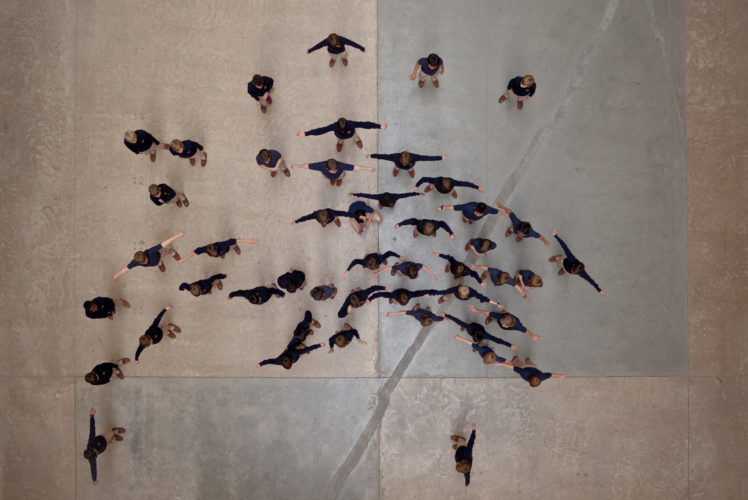

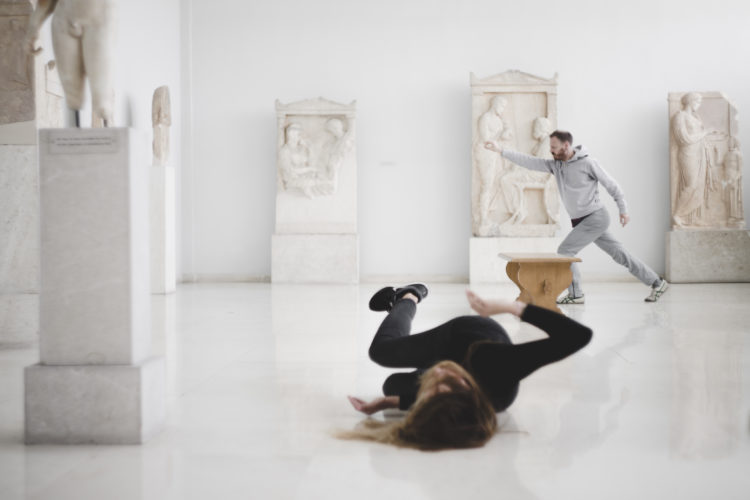

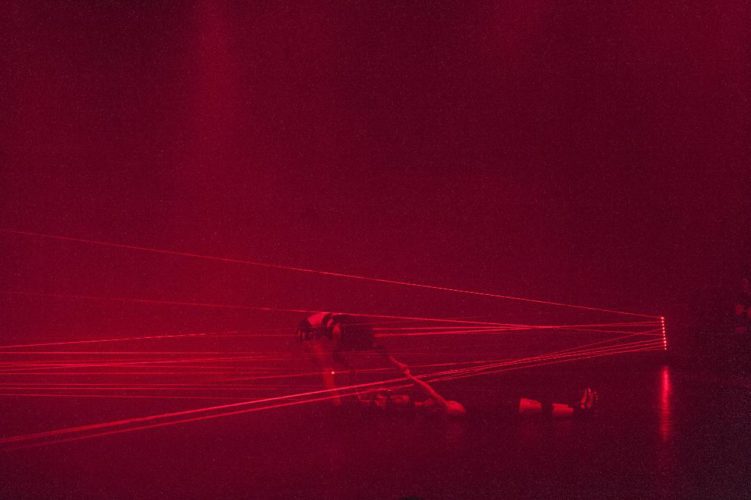
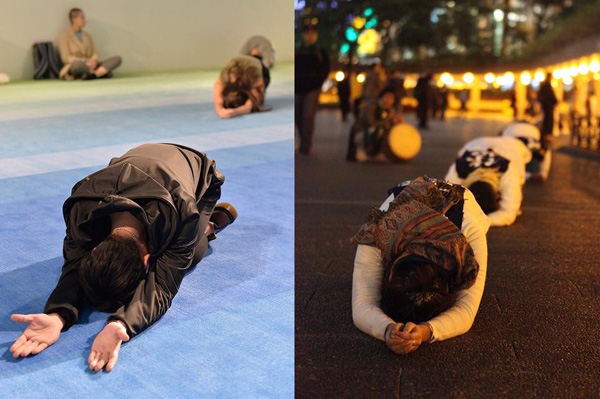
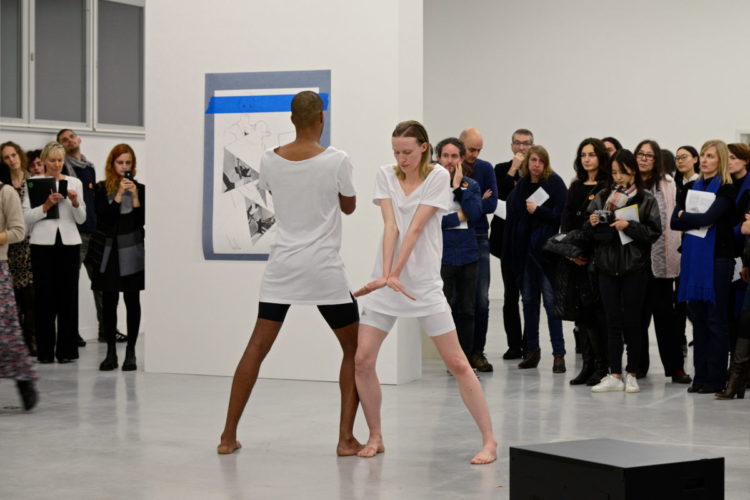

Comments are closed here.